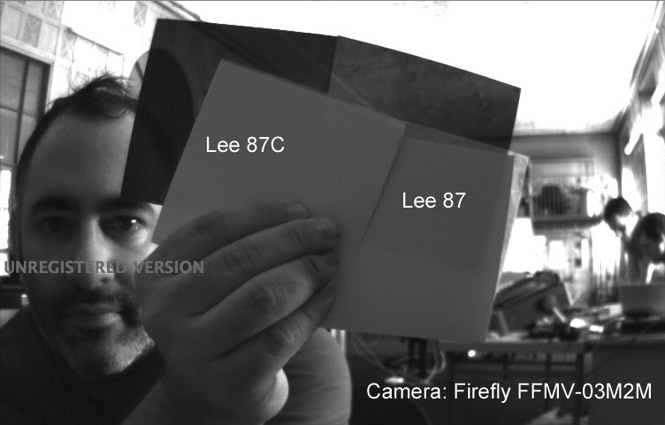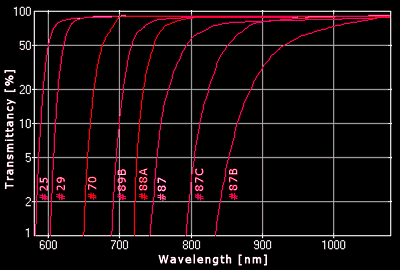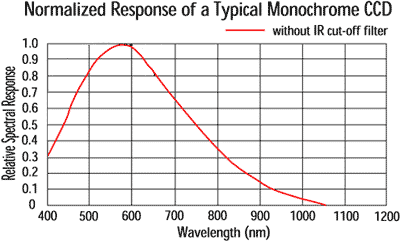A Brief Note on Infrared Filters: 87 vs 87C
6 June 2010 / reference
Many computer vision projects require a camera which blocks visible light and exclusively sees infrared light. Unless you have money to spend on optical glass units, such filters generally take the form of a thin sliver of black gelatine or polyester sheet, inserted between your camera’s sensor chip and your lens. Representative products include the Kodak Wratten series (about $0.80 per square cm), and the Lee filter series (~$0.25 per square cm). These filters each have several varieties with different spectral properties: Type 87 passes IR longer than 750 nanometers, while type 87C passes IR light longer than 800nm. In the photo above, I’m holding a sample of each of these filters. (The camera can see through these, but they’re both optically black to humans.) Here you can see the filters’ spectral responses:

Meanwhile, most CCD sensors have spectral responses which taper off in the infrared regions above ~700nm:

Thus, the photo at the top of this post confirms what you would logically expect: as the sensitivity of the CCD diminishes for longer wavelengths of IR light, IR-pass filters with higher cutoff frequencies will allow less and less light through to the camera. How much less? To judge from my casual test, I’d say about 10%, 25 grayscale levels, or roughly ½ of an F-stop. No big surprises here, but it’s nice to see the theory confirmed. The quick upshot: Choose an 87 filter over an 87C if you need to get the most out of your infrared illumination.
For more information about IR imaging, I recommend the resources:
- The Infra-Red Photography FAQ
- Don Klipstein’s page.
- Infrared basics for digital photographers
- Reflected infrared photography: Filters
- Infrared Photography with a Digital Camera
(Please note that this article refers to cameras and filters for “near IR” [close to red, with wavelengths around 700-900 nanometers], not the “deep IR” thermal-imaging cameras [sensitive to wavelengths in the 7-14 µm range], such as those made by FLIR.)
« Prev post: Computational Gastronomy
» Next post: TykeType! a free, open-source application for toddler typing